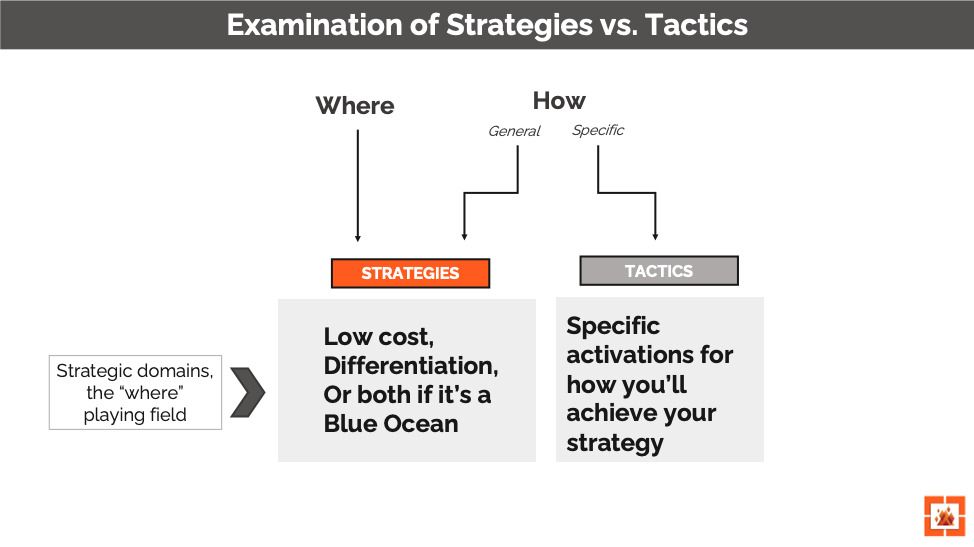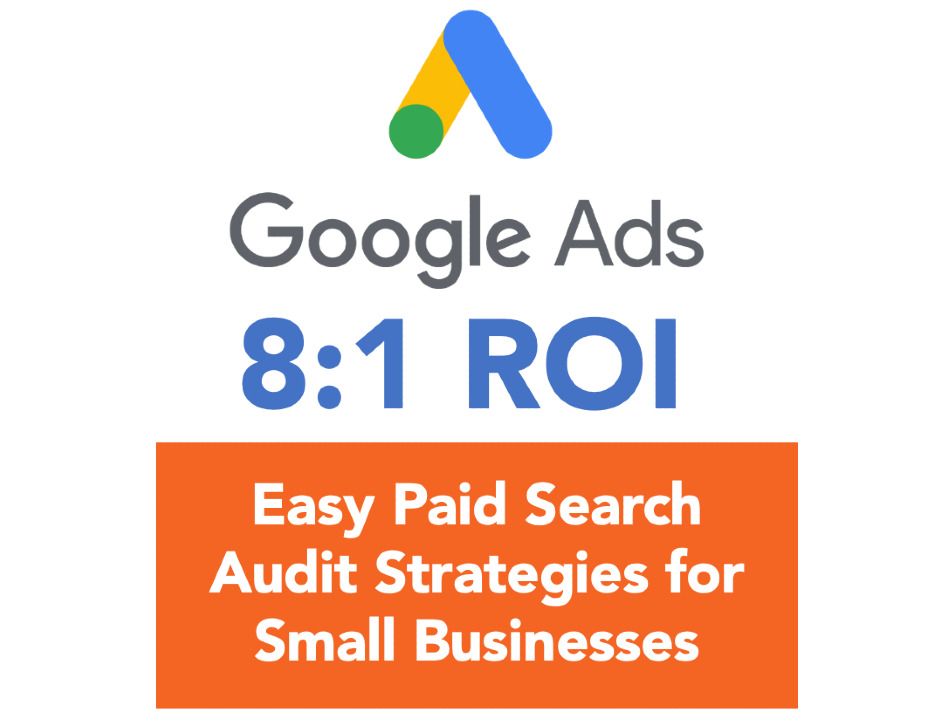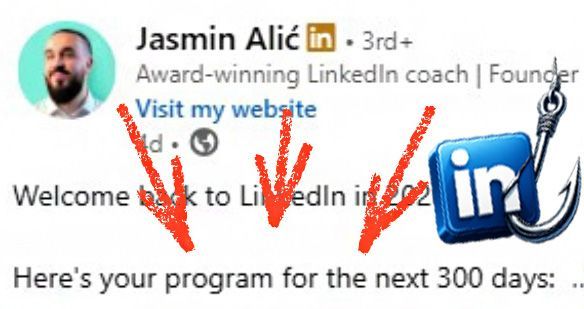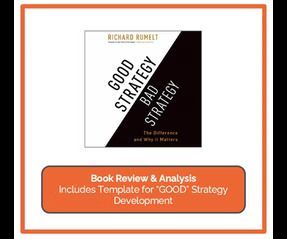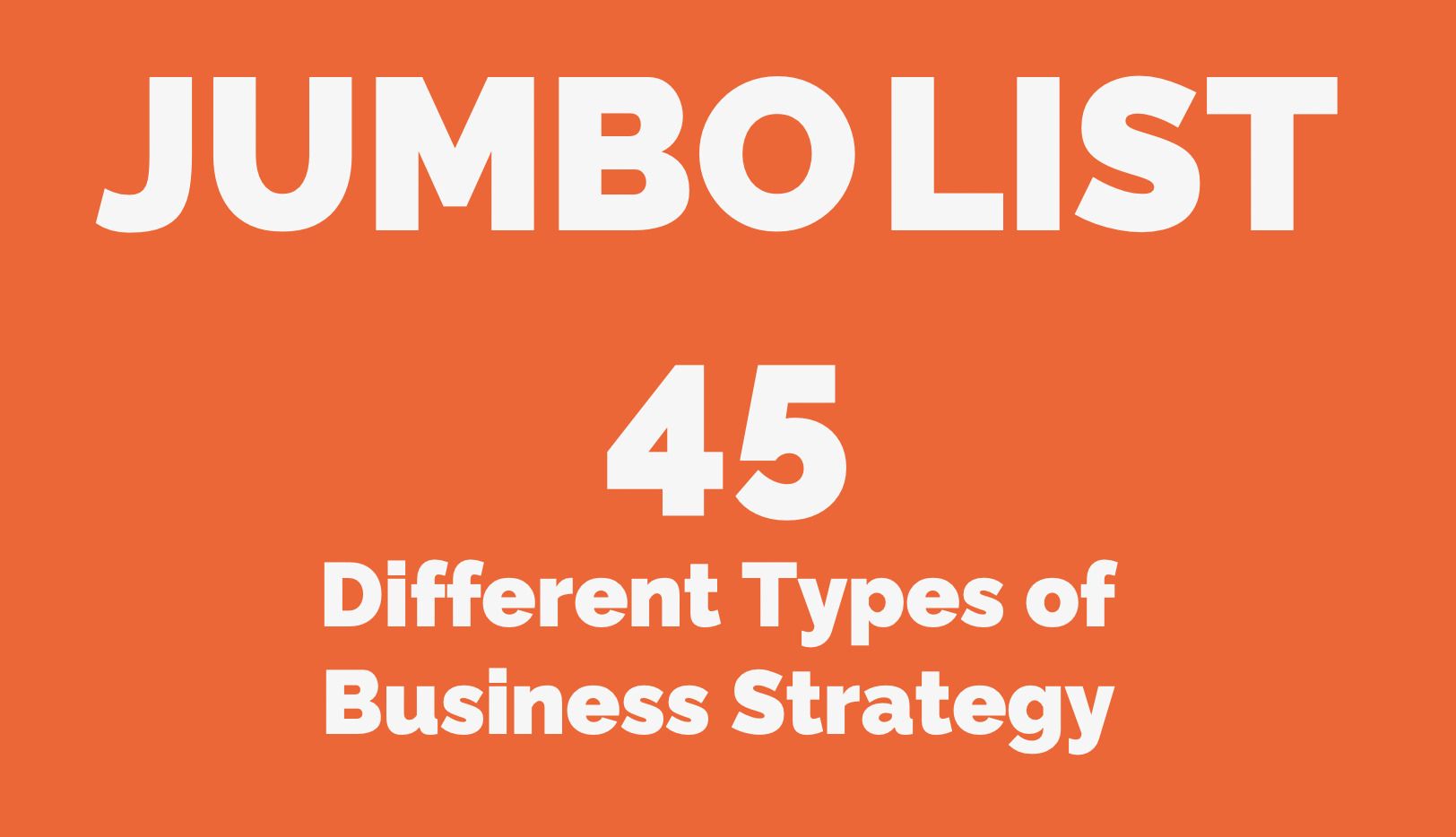The 5Cs Marketing Framework in Depth with Tesla Example
By Adam Fischer • August 25, 2022

What Are the 5Cs in Marketing?
The 5Cs marketing framework famously includes:
- Context
- Customers
- Competitors
- Collaborators
- Company
It forces you to think expansively about the entire universe your business operates in, with a focus on your external environment. A simple tool on the surface, it provides a way to understand the present state of your business so you can attempt to predict, react, and create the future. This article goes in depth into what the 5Cs in marketing are, and also equips you with three 5Cs templates using a Tesla example. You’ll get actionable tools to use for each C so you can get started right away. Our goal is to make this strategy framework practical so entrepreneurs and start-ups can use it as easily as larger organizations.
Want to see how Tesla's marketing strategy looks using the 5Cs framework? Here's a link to multiple 5Cs templates you can edit and start using right away: DOWNLOAD 5Cs framework Templates.
How is the 5Cs Marketing Framework BETTER than the 3Cs?
It adds two important Cs, Context and Collaborators, to the 3Cs mix, allowing for an even more “outside in” perspective. The addition of these two Cs forces you to think broadly about your business situation, giving greater weight to the context your business operates in and how to collaborate with partners to gain competitive advantage. Kenichi Ohmae, the author of the original 3Cs concept, is one of the greatest strategic thinkers of our time. His book “The Mind of the Strategist” (link to the book on amazon) approaches strategy and strategic thinking in a philosophical way that becomes a part of you. Here are some great quotes by Kenichi, including:
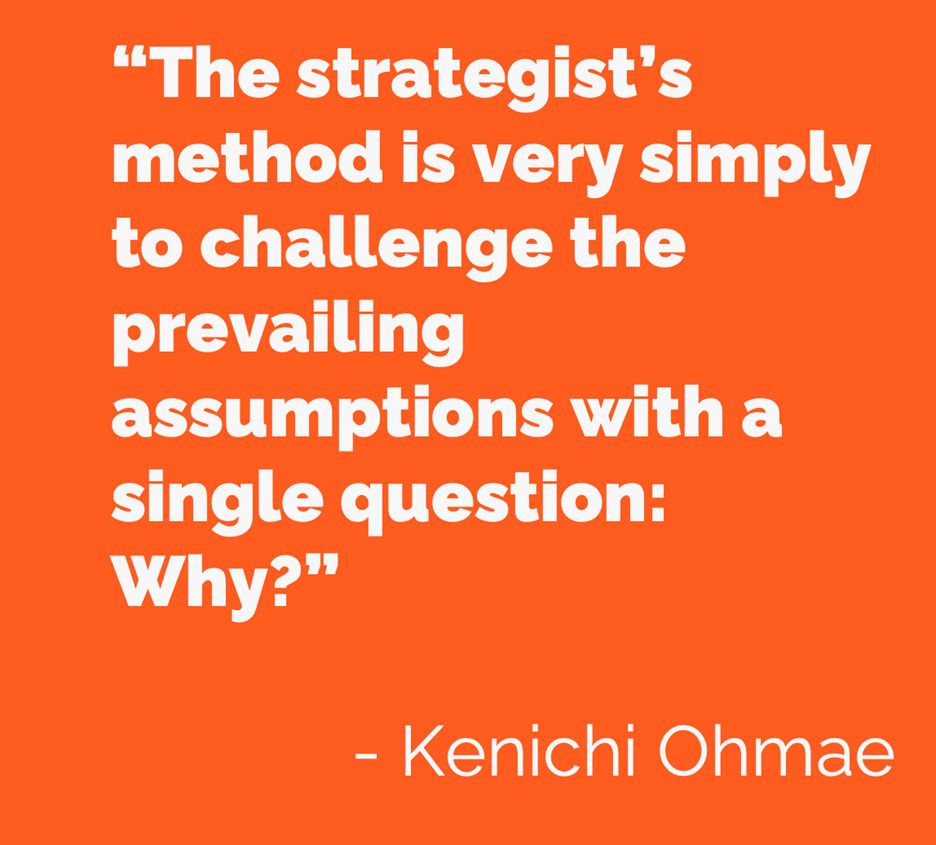
How to Use the 5Cs Marketing Framework Efficiently
This tool can be as simple (low effort) or as in depth (time intensive) as you want it to be. It’s great for entrepreneurs and small/medium sized business because it doesn’t necessarily require deep analytics or rigor; even basic information can be powerful when put together on one page. The tool’s focus is to see your business holistically and find linkages to drive future strategy.
How to Start Using the 5Cs Marketing Framework?
One way to start is to spend 15 minutes filling out each section with the information you already have top of mind (disregard this step if you want to use research to inform fresh thinking). From there, you determine how much additional information you need based on where your knowledge gaps are. You’ll find tools to help you for each C in this article.

What Are Mistakes to Avoid When Doing a 5Cs Analysis?
Boiling the Ocean
Although your goal is to cast a wide net to get new information, you’ll need to apply some intuition for when to go wide and when to winnow things down
Not being solution oriented
To help winnow down the information, as yourself, will this information help us solve business problems for our customers and/or company?
Not getting the right stakeholders involved
If you work at a larger organization, make sure you have breadth and depth of who contributes to the analysis
Not Customizing the 5Cs marketing approach to meet the needs of your business
You don’t have to use the 5Cs for an incredibly broad analysis of your company - you can do a 5Cs for a business unit or brand if that’s the level of analysis you need.
Where Do the 5Cs in Marketing Fit within Strategic Planning?
The Analysis of the 5Cs in marketing kicks-off a situational assessment in the “open phase” of OCCAM. Strategy Kiln loves to showcase OCCAM’s Strategy Razor, our five-step process for strategic planning that includes two crucial ingredients that are often overlooked, strategic thinking and strategic leadership. We've got a post about OCCAM and have some free OCCAM Frameworks Available for download if you want to know more.
Why Are the 5Cs in Marketing Important?
If you want a clear marketing or strategic plan, you need a holistic and deep understanding of your company, customers, competitors, collaborators, and climate dynamics. The 5Cs will give you observations and data to analyze; as a next step you need to transform that data into key challenges and insights. From there, you’ll create your strategies and action plan.
Instead of telling you what you can plug into each section, I’ve written the key questions that you should ask. Asking good questions is the hallmark of strategic thinking.
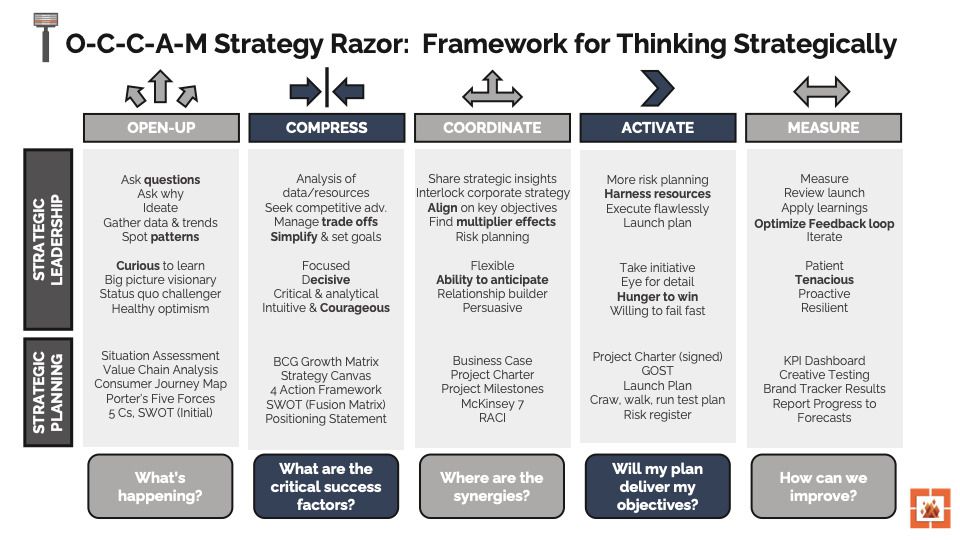
Context (Business Climate)
The best place to start a 5Cs analysis is with context, looking at the external macro trends shaping the context your business operates in
- What’s happening out there in the external landscape and how are you positioned to win?
- What business do you actually operate in?
- How has the industry changed in the last five years?
- How might the industry change in the next 5 years?
- How does the macro economy affect how you do business?
- Do you perform better or worse during recessions?
- How can you diversify to ensure sustainability during difficult times?
- Based on mega trends, are you in a good position to win?
- How is technology changing?
- Is disruptive innovation a threat and/or opportunity?
- Consider conducting a PESTEL analysis
- What legal/regulatory rules or laws could impact your ability to operate?
- Is your supply chain exposed to trade tariffs (e.g. products from China during the trade war) or shortages?
A practical way to understand broader trends shaping context:
Everyone LOVES Google Trends because it’s so easy to use. Go take a look at keywords like “keto diet” or “work from home” and see how these topics are exploding, leveling, or declining over time.
Customers
Customers is arguably the most important C of the 5cs in marketing. The essential question here is, are you able to articulate what your relationship with customers is like, how your customers are changing, and how you’ll adapt to better serve their needs vs the competition? A basic way to look at customers is from a new customer acquisition vs. current/loyal customer standpoint.
Current Customers:
Do we have a qualitative and quantitative sense of who your customer is?
- Take a look at your sales data from multiple time periods. E.g. Look at the last 5 years of sales, annual view, monthly breakdowns, and even what sells on a daily basis can unlock insights
Who are your low/medium/heavy buyers?
- What are the demographics/psychographics/behaviors that describe them, and how can we use this information to hone product and marketing decisions?
What customer problems do you solve? What are their needs, desires, motivations?
- Is what you offering meeting their needs? What are their unmet needs?
Are there any customers we should stop serving?
What are the key customer learnings we have that can drive future strategy?
What are your most effective marketing channels and why?
What are your most effective creative assets and why?
New Customer Acquisition:
- In terms of market structure, what are the largest customers groups and product/service segments
- Where is the most growth, and are you prepared to serve the largest growth segments?
- Are there any key needs we could serve but currently are not?
- What do customers value and how can you provide that value in a unique way?
- What are the biggest barriers and consumer misconceptions you need to overcome?
- What are customer’s WTP (willingness to pay) and how are you positioned from pricing standpoint?
- Are there customer groups you could appeal to with new marketing?
Practical ways to understand your customer
Pollfish or other Survey Tool
- Create a survey to get answer to customer pain points and needs using your current audience, or use Pollfish
- Pollfish will get you an audience of ~400 for ~$500. It’s something I plan to try myself over the next few months
- It’s totally free to take a look at what customers type in google and get volume and cost estimates
- Just type in Keyword Planner in google and you can figure out how to access it
- Gives you three free searches per day, and it’s what I use to get a sense of high volume/low competition customer interest online
Competitors
Competitive advantage comes from deep knowing how your competition and being different. It’s enticing to use competitive information to develop "me too" approaches; don’t fall for it. Use a tool like the Strategy Canvas to map your position, across key dimensions, vs. the competition and capitalize on the gaps. Here's a link to the post we wrote about the Strategy Canvas using Tesla as an example:
- Who are the market share leaders and why?
- Who has gained/lost share and why?
- How are competitor’s business models similar or different?
- Any new business models introduced that are small now but growing fast?
- How can your competitor strategies help inform your own, where relevant?
- Who are the direct and indirect competitors we face?
- Who will the future competitors that will overtake the market look like?
- What have the latest innovations been?
- Are we competitive in terms of innovation (quantity, quality, and scale wise)?
- What should we consider as a new approach to innovation, if needed?
- Which competitors have strong brand equity and why?
- Who are the regional winners and losers?
- Who is winning on quality, price, or both?
- Who has the best products or services and what unique capabilities allow this?
- Who has the best marketing campaigns or brand image in the eyes of customers?
Practical ways to understand your competition
Did you know you can go to any of your competitor’s Facebook page and see exactly what ads they have up, and how much their ad spend is for social/political agendas? Well you can – just got to the competitors Facebook page and find this Page Transparency box on the left side of the page, and from their you can “go to Ad Library” as shown above.
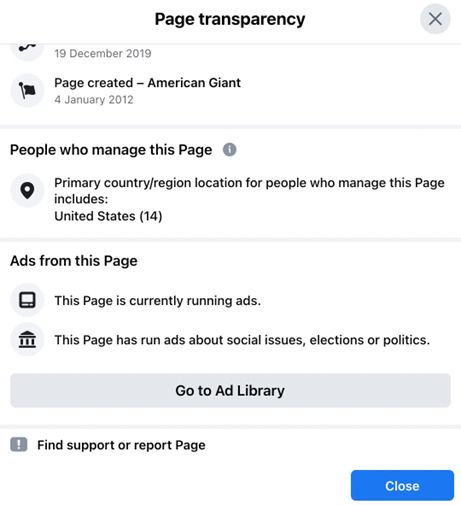
- This is another incredible free resource that lets you see a competitor’s domain authority (likelihood to get SEO traction in google), but more importantly, let’s you see what content (pages, articles, etc.) is driving the most traffic for your competition
Collaborators
This section of the 5Cs has different levels of importance based on become more your business grows and needs shift, you’ll need to review your roster of partners. Depending on how you want to treat this C, it can be focused on either internal or external stakeholders, or both.
- Do we have the right business partners across all aspects of the business?
- Should we partner with one full spectrum marketing agency or have several niche agencies that specialize in creative development, SEO, paid media, PR, etc.
- Who wants to partner and win as much as you do?
- Is there an opportunity to improve current relationships or engage new partners?
- Is our technology helping or hindering us from being productive? What areas should we prioritize in terms of need?
- Marketing agency partnership: Do we need a strategy, branding, or marketing campaign partner?
- Marketing software technology: E.g. Are current email and website platforms capable of delivering what we need to our customers? You could pull in influencer partnerships here if they transcend a standard marketing outreach approach. As a practical tool, a RACI outlines how different stakeholder work together on a given project
Company
Now it’s time to look inward. You’ll often see company as the 1st C. In terms of logic, I think it’s best left as the final C because this keep you focused on the external environment first, helping avoid bias. Then, you can bring it all together by seeing how your company is positioned. Make sure to be brutally honest in your assessment of your company’s position.
- Given our 5Cs analysis, how well positioned are we in the face of challenges and opportunities?
- How adaptable is your company?
- Where will you be able to easily respond?
- Do you need to more global and/or local?
- Are we profitable?
- Could we be more profitable?
- How have we tracked vs. goals and objectives in the past?
- Are brand equity metrics trending positive or declining?
- Is there an opportunity to increase operations and reduce costs?
- What assets do we possess that may be underutilized?
- How can we reinforce current assets and operations to provide greater results?
- What is your company culture like?
- What are the top values we aspire to vs. what employees say we stand for?
- Where are you currently investing capital?
- Are these the right areas to invest?
- What should you invest in for the long term?
- What’s keeping you up at night?
- What SHOULD be keeping you up at night?
One of the drawbacks of a 5Cs analysis is that it’s not a decision-making tool. You get observations and facts...
The goal is to draw initial business implications, and from there choose another approach in order to formulate a strategic recommendation.
You can incorporate a SWOT Analysis, either within the 5Cs marketing framework, or as a next step.
When used properly, the SWOT analysis makes an excellent complement to the 5Cs in marketing framework, using the data you’ve gathered from the 5Cs as inputs. Don’t think of SWOT as a data collection tool, a SWOT should drive strategic insight by linking strengths, weaknesses, opportunities, and threats against each other, leading you to where your opportunity to grow exists. You can watch a dedicated video on the “SWOT Fusion Matrix,” or “TOWS,” which is a powerful recommendation version of the SWOT, here
Is the 5Cs Marketing Framework Better for Entrepreneurs or Big Businesses?
Most entrepreneurs don’t have the time to conduct exhaustive, research rich, months long strategic
plans like larger organizations. If you use the shortcut methods and tools I outlined above for entrepreneurs, you’ll be successful in getting the foundational data needed in order to conduct your 5Cs marketing analysis.
Summing it up...
How to use the 5Cs:
- Keep the 5Cs as one slide for a high-level view, or break in out into multiple slides to tell a story
- Can be used for annual planning at the enterprise, business unit, brand, or even product level and also works well as a method to bring new employees up to speed on how your business operates
- Bolting on other tools, such as a SWOT and PESTEL analysis, leads to better decision making
- Take a look and refresh it often; at least every 6 months
5Cs in Marketing Advantages
Simple, holistic view of your business
Flexible format can adjust to the level of detail you need in your analysis
5Cs in Marketing Disadvantages
Weak on actionable next steps without adding other tools like SWOT
Watch out for making the tool too simple (not enough data)
What are some pros or cons you’ve experienced with the 5Cs approach?
Any thoughts on how to get this off the ground in smaller organizations?
Let us know! Send us a message at questions@strategykiln.com
Adam Fischer is a marketer with 10+ years of experience in brand management and digital marketing. He’s challenged conventional assumptions and taken bold moves to drive growth for small businesses like Dogeared Jewelry to multi-billion-dollar companies like CVS Health and Nature Made Vitamins. He leverages his B.S. in Philosophy from Northeastern University to ask questions that get to the heart of business issues, while his MBA in Marketing from the Thunderbird School of Global Management at ASU translates management philosophy into real strategic growth.
Insights to fuel your marketing business
Sign up to get industry insights, trends, and more in your inbox.
Contact Us
We will get back to you as soon as possible.
Please try again later.
Latest Posts
